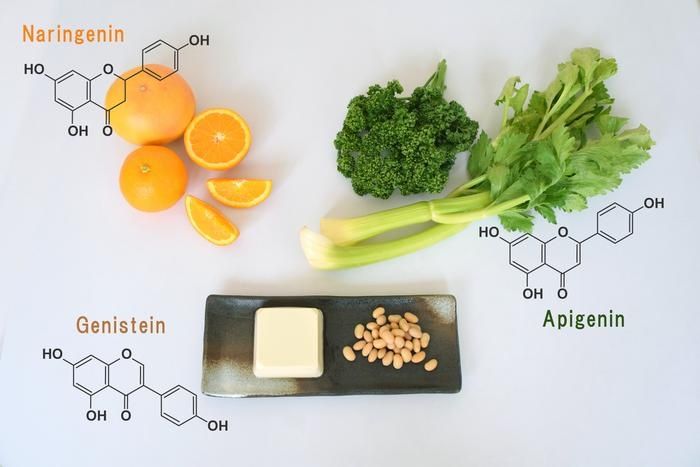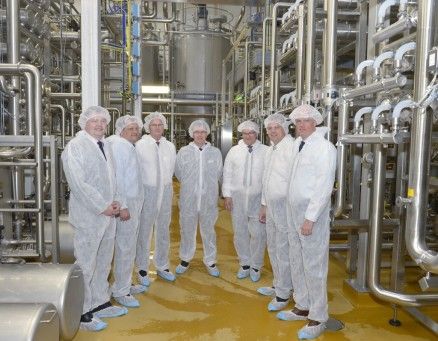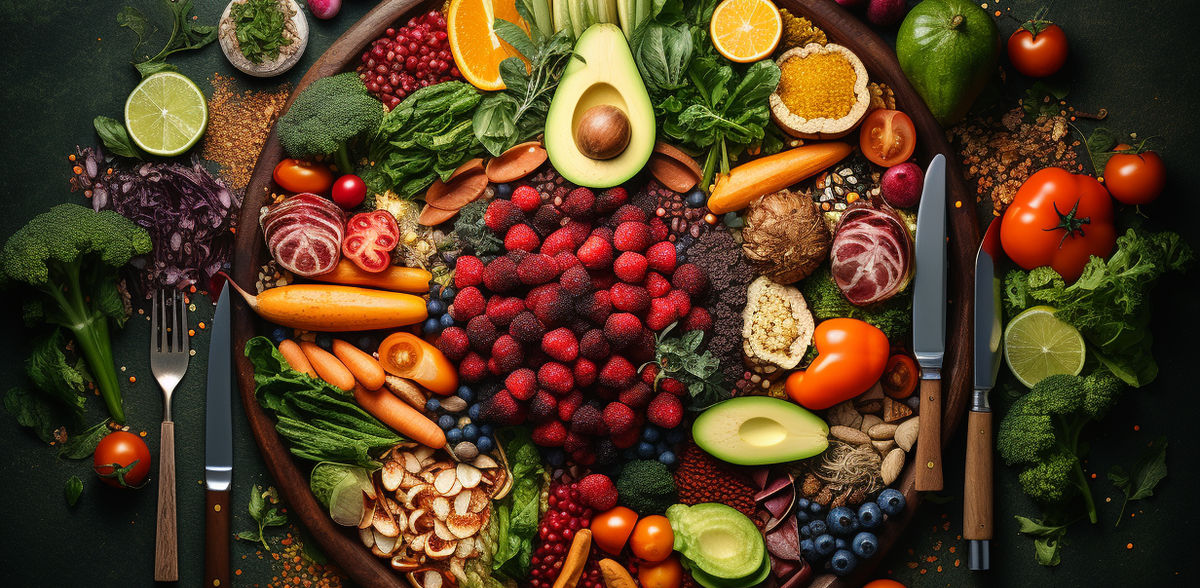Decoding flavonoid metabolism: a closer look at plant-based diets
Understanding how our bodies break down flavonoids from plants and how this process relates to their potential health benefits
In a world where plant-based lifestyles are on the rise, the power of foods such as broccoli, celery, and tofu, which are rich in flavonoids, is becoming clearer. Flavonoids are phenolic compounds produced by plants that are essential for plant development and defense and have long been said to have therapeutic and preventive effects against cancer and heart disease. However, the exact process of how our bodies metabolize flavonoids remains unclear.

Typical foods that contain naringenin, apigenin and genistein and the chemical structural formulas
Osaka Metropolitan University
An international team of researchers led by visiting researcher Tsutomu Shimada and Professor Shigeo Takenaka of the Graduate School of Human Life and Ecology at Osaka Metropolitan University, has shed light on the mechanism of three major flavonoids - naringenin, apigenin and genistein - and the processes by which the body metabolizes them. Molecular docking analyses revealed that human enzymes modify flavonoids in a similar way to how plants modify flavonoids.
“The results of this research are fundamental in elucidating the correlation between the metabolism of flavonoids in the body and their potential health benefits,” explained Professor Takenaka.
Original publication
Haruna Nagayoshi, Norie Murayama, Vitchan Kim, Donghak Kim, Shigeo Takenaka, Hiroshi Yamazaki, F. Peter Guengerich, Tsutomu Shimada; "Oxidation of Naringenin, Apigenin, and Genistein by Human Family 1 Cytochrome P450 Enzymes and Comparison of Interaction of Apigenin with Human P450 1B1.1 and Scutellaria P450 82D.1"; Chemical Research in Toxicology, Volume 36, 2023-10-2
Most read news
Original publication
Haruna Nagayoshi, Norie Murayama, Vitchan Kim, Donghak Kim, Shigeo Takenaka, Hiroshi Yamazaki, F. Peter Guengerich, Tsutomu Shimada; "Oxidation of Naringenin, Apigenin, and Genistein by Human Family 1 Cytochrome P450 Enzymes and Comparison of Interaction of Apigenin with Human P450 1B1.1 and Scutellaria P450 82D.1"; Chemical Research in Toxicology, Volume 36, 2023-10-2
Other news from the department science

Get the food & beverage industry in your inbox
By submitting this form you agree that LUMITOS AG will send you the newsletter(s) selected above by email. Your data will not be passed on to third parties. Your data will be stored and processed in accordance with our data protection regulations. LUMITOS may contact you by email for the purpose of advertising or market and opinion surveys. You can revoke your consent at any time without giving reasons to LUMITOS AG, Ernst-Augustin-Str. 2, 12489 Berlin, Germany or by e-mail at revoke@lumitos.com with effect for the future. In addition, each email contains a link to unsubscribe from the corresponding newsletter.
Most read news
More news from our other portals
Last viewed contents

Green tea and resveratrol reduce Alzheimer's plaques in lab tests - Using a 3D neural tissue model, Tufts researchers find the compounds diminish amyloid plaques with no side effects
Pulsotronic-Anlagentechnik and GPS Reisacher announce cooperation

Chr. Hansen reaches scientific breakthrough in dairy bioprotection
Tuning for packaging: Innovative adhesives and food-safe packaging - Jowat SE at FachPack 2016

Upcycling of PET Bottles: New Ideas for Resource Cycles in Germany
Salmonella, Listeria and Co.: Old and new challenges for food safety

Oat reference genome: Insights into a uniquely healthy cereal crop

Kerry Group plc announces its intention to acquire Biosearch Life

400th InnoPET Blomax Series IV stretch blow molder goes to Warburg

Top Trends in Dairy Focus on Specific and Holistic Health Benefits

Lab analysis finds near-meat and meat not nutritionally equivalent - Neither is good or bad, they are just not the same, authors say



























































